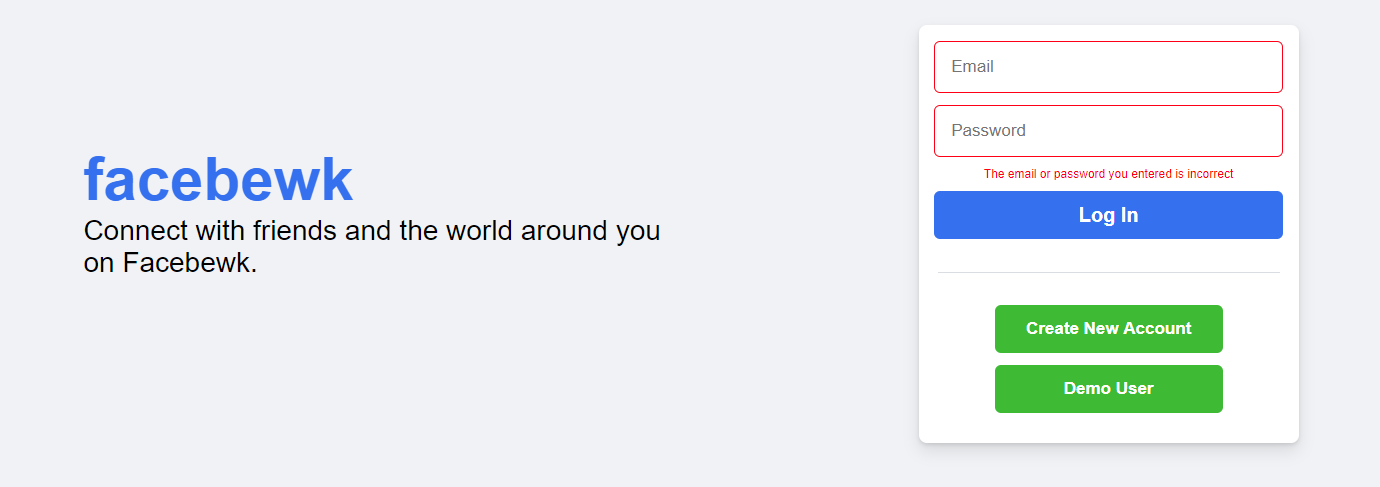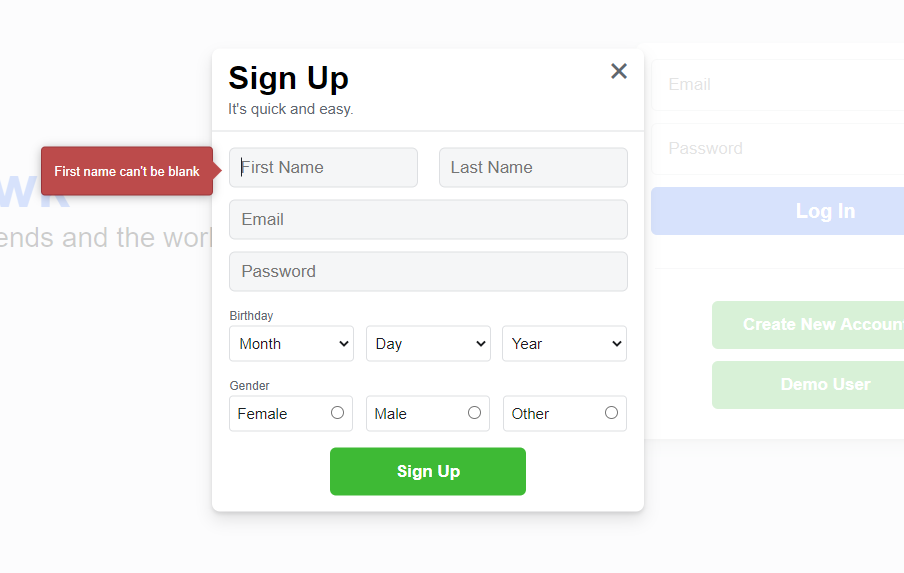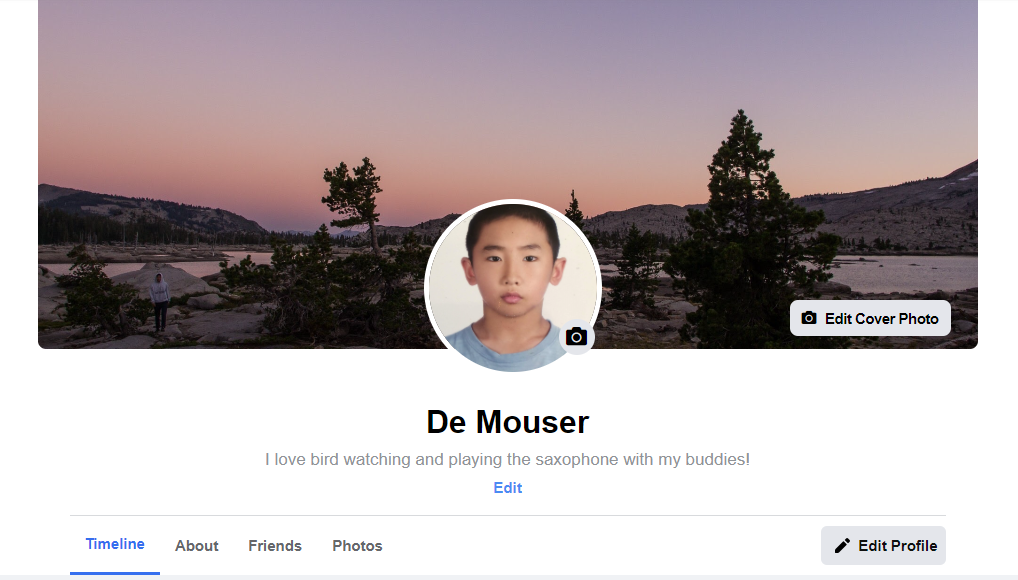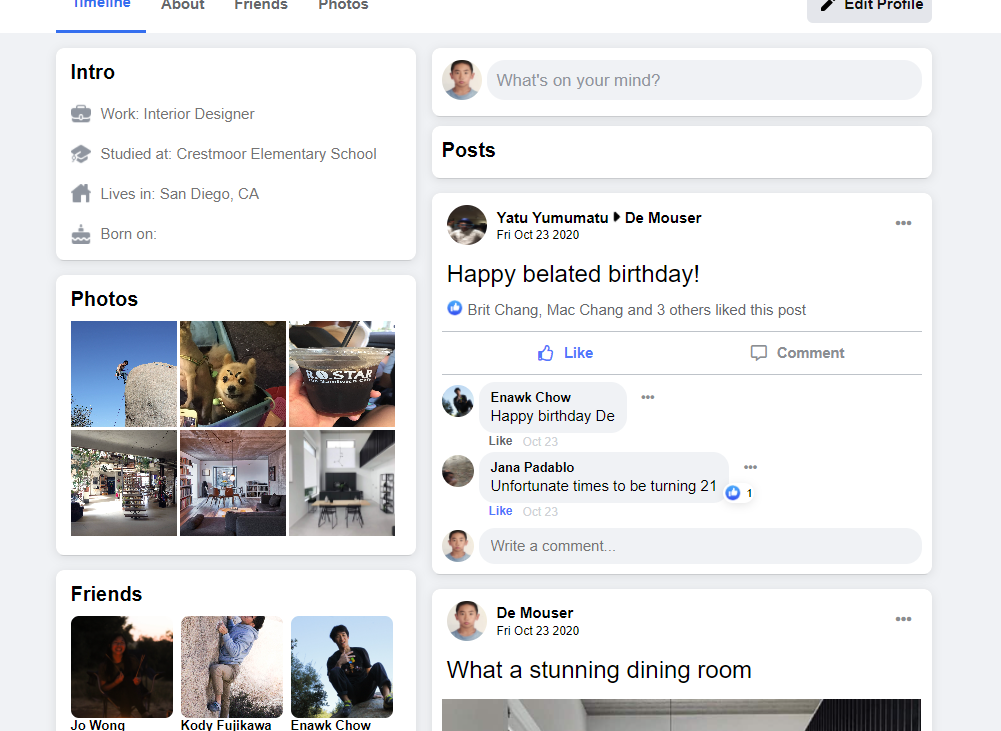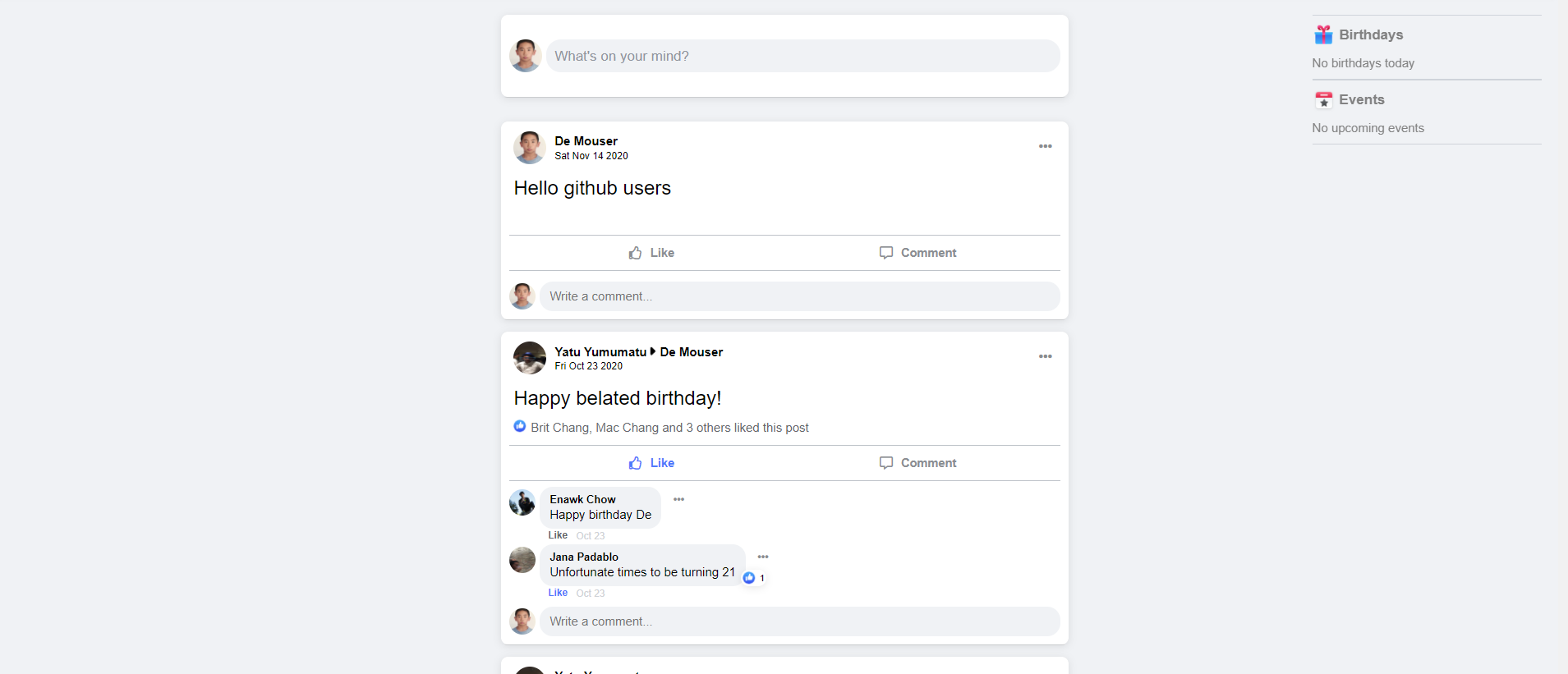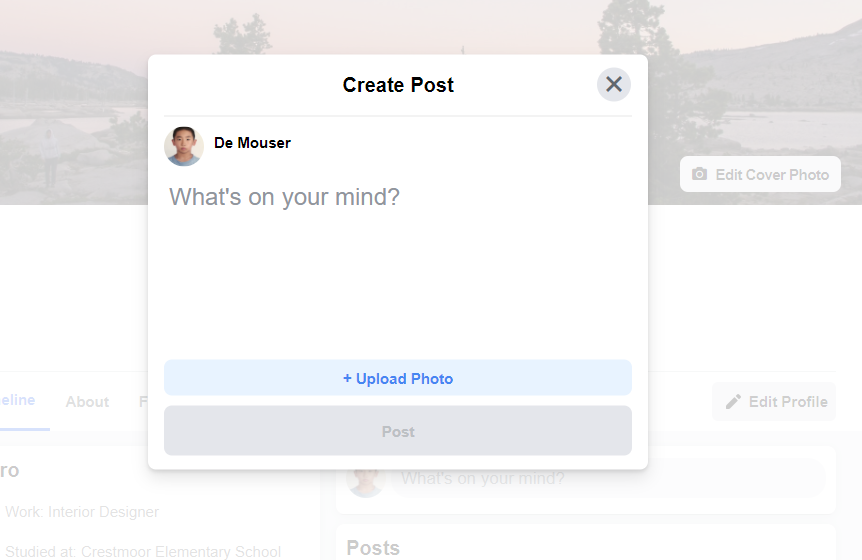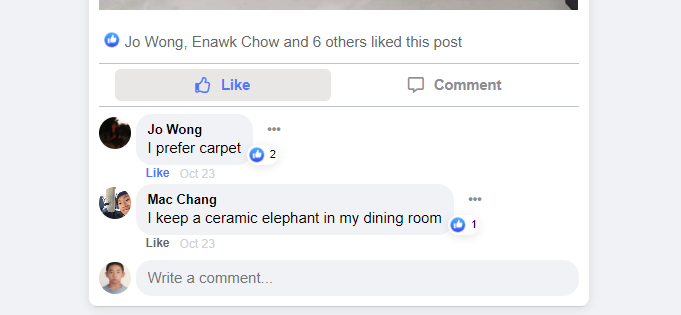Facebewk is a functional Facebook clone that allows users to create profiles for themselves, add other users as friends, and create text and image posts on their own walls and friends' walls. Users can view all of their friends' posts in one place on the news feed page, and add likes to posts and comments that they like.
Live site: Facebewk
- Front end
- Vanilla Javascript
- Front end functionality
- jQuery
- AJAX requests to the back end
- React
- Front end structure
- Redux
- Front end store
- HTML
- CSS
- Vanilla Javascript
- Back end
- Ruby on Rails
- PostgreSQL
- JBuilder
Posting (Possible from wall or news feed)
Post Features (Includes post likes, comments, and comment likes)
Image Posts
For new friendships
- Edit profile photo and cover photo
- Edit about page
- Edit and delete posts and comments
- Search with search suggestions
Friendships and friend requests are a core feature of Facebewk, and they were a challenge to implement. For the sake of improving performance when making requests to the back end, each friendship is represented by two corresponding rows in a table - one where user A is the user and user B is the friend, and vice versa. This allows backend requests to be more specific, and helps the front end avoid having to do unnecesarry filtering. Connecting friend requests to friendships was also tricky, as I wanted to avoid leaving friend requests in the database where the users had already become friends. In order to tie them together, I created custom actions in the back end for the friendships controller. When a friend request is accepted, the two corresponding rows for the friendships table is created, and then the outstanding friend request is deleted.
def create
@friendship = Friendship.new(friendship_params)
friend_request = FriendRequest.find_by(requested_id: params[:friendship][:user_id], requester_id: params[:friendship][:friend_id])
corresponding_friendship = Friendship.new({user_id: params[:friendship][:friend_id], friend_id: params[:friendship][:user_id]})
if @friendship.save
corresponding_friendship.save
friend_request.destroy
render :show
else
render json: @friendship.errors.full_messages, status: 400
end
endFacebewk is a single page web application, and in order to avoid heavy routing in the front end, I structured profile pages to keep track of, and conditionally render, different profile sections with state.
render(){
if(this.props.isFetching || !this.props.user){
return null
}
let renderedPage;
if(this.state.page === 'timeline'){
renderedPage = <Timeline
user={this.props.user}
currentUser={this.props.currentUser}/>
}
else if(this.state.page === 'about'){
renderedPage = <About
user={this.props.user}
currentUser={this.props.currentUser}/>
} else if(this.state.page === 'friends'){
renderedPage = <Friends
user={this.props.user}
full={true}/>
}else if(this.state.page === 'photos'){
renderedPage = <Photos
user={this.props.user}
full={true}/>
}.... .... ....
<div className="profile-nav-links">
<div
className={this.state.page === 'timeline' ? 'active-profile-page' : ''}
onClick={this.handlePageToRender('timeline')}>
<p>Timeline</p>
</div>
<div
className={this.state.page === 'about' ? 'active-profile-page' : ''}
onClick={this.handlePageToRender('about')}>
<p>About</p>
</div>
<div
className={this.state.page === 'friends' ? 'active-profile-page' : ''}
onClick={this.handlePageToRender('friends')}>
<p>Friends</p>
</div>
<div
className={this.state.page === 'photos' ? 'active-profile-page' : ''}
onClick={this.handlePageToRender('photos')}>
<p>Photos</p>
</div>
</div>I also had to decide between fetching all data for profiles up front in a high-level component, or to fetch a smaller amount of meta data, and pass that data down to children components to handle more specific fetching. I decided to go with the second option, as this avoided refetching data that might already be available in the Redux store.
- Optimize for mobile (media-queries)
- Messaging functionality
- Notifications for comments and likes
- Groups
